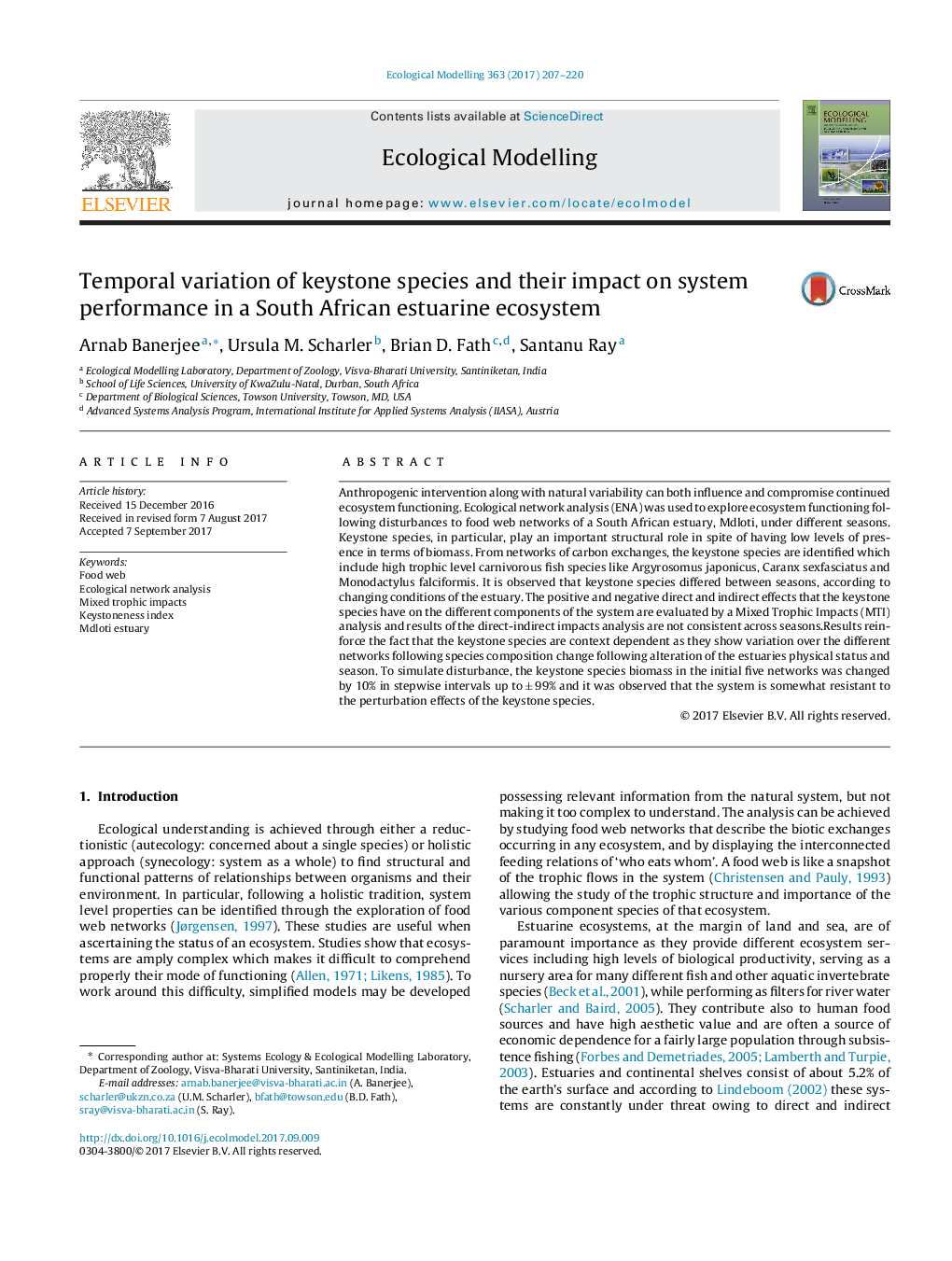| Article ID | Journal | Published Year | Pages | File Type |
|---|---|---|---|---|
| 5742024 | Ecological Modelling | 2017 | 14 Pages |
â¢Five models representing five different time periods Food web models for Mdloti estuary are developed with Ecopath software.â¢The keystone species are identified in each of the networks following different keystoneness indices.â¢MTI analysis is performed from unperturbed steady state networks to assess impacts of keystones on other system elements.â¢It is observed that the keystone species changes over the different scenarios.â¢The effects of the keystone species in their respective networks are not always high.
Anthropogenic intervention along with natural variability can both influence and compromise continued ecosystem functioning. Ecological network analysis (ENA) was used to explore ecosystem functioning following disturbances to food web networks of a South African estuary, Mdloti, under different seasons. Keystone species, in particular, play an important structural role in spite of having low levels of presence in terms of biomass. From networks of carbon exchanges, the keystone species are identified which include high trophic level carnivorous fish species like Argyrosomus japonicus, Caranx sexfasciatus and Monodactylus falciformis. It is observed that keystone species differed between seasons, according to changing conditions of the estuary. The positive and negative direct and indirect effects that the keystone species have on the different components of the system are evaluated by a Mixed Trophic Impacts (MTI) analysis and results of the direct-indirect impacts analysis are not consistent across seasons.Results reinforce the fact that the keystone species are context dependent as they show variation over the different networks following species composition change following alteration of the estuaries physical status and season. To simulate disturbance, the keystone species biomass in the initial five networks was changed by 10% in stepwise intervals up toâ±â99% and it was observed that the system is somewhat resistant to the perturbation effects of the keystone species.
